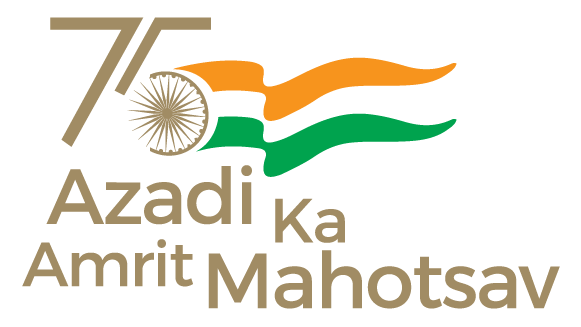
The President of India, Smt. Droupadi Murmu, conferred the prestigious National Geoscience Awards (NGA) for the year 2023 at a grand ceremony held today at the Rashtrapati Bhavan Cultural Centre, New Delhi. The event was graced by the presence of Shri G. Kishan Reddy, Minister of Coal and Mines, Shri Satish Chandra Dubey, Minister of State for Coal and Mines, Shri V.L. Kantha Rao, Secretary, Ministry of Mines and Shri Asit Saha, Director General of the Geological Survey of India (GSI) along with other senior officials.
This year, a total of 12 awards to 21 Geoscientists, including academicians and professionals from across the country, were honoured under three categories: National Geoscience Award for Lifetime Achievement (01 award), National Geoscience Award (10 awards) and National Young Geoscientist Award (01 award) in various specialized fields of geosciences.
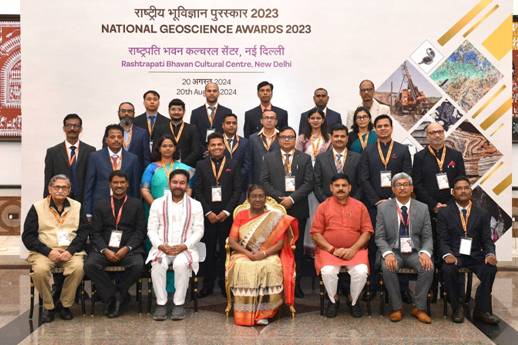
The National Geoscience Award for Lifetime Achievement was bestowed upon Prof. Dhiraj Mohan Banerjee, Emeritus Scientist at the Indian National Science Academy (INSA), recognized for his distinguished and pioneering work on phosphorites, isotope geology, and organic geochemistry of Precambrian sedimentary rocks of India. His career spans decades of impactful research, contributing to our understanding of the complexities of the Himalayas and the genesis of phosphorites on a global scale.
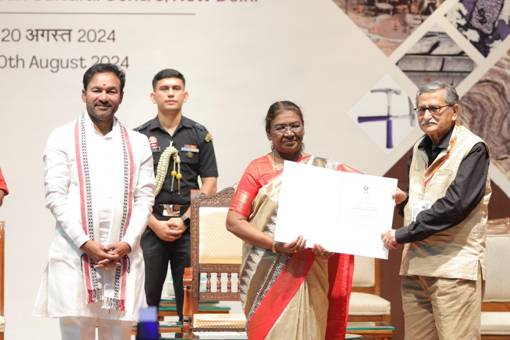
Under the National Geoscience Award category, a total of 10 awards including 3 teams were conferred in various fields of geosciences.
Dr. Ashutosh Pandey, Assistant Professor at the Indian Institute of Science Education and Research (IISER), Thiruvananthapuram, received the National Young Geoscientist Award. Dr. Pandey was honored for his groundbreaking research and significant insights into the geodynamic evolution of the Eastern Dharwar Craton and suggesting an alternative model for the origin of Paleoproterozoic Lesser Himalayan mafic rocks.

In his welcome address, Secretary, Ministry of Mines, Shri V.L. Kantha Rao, elaborated on the evolution of the National Geoscience Awards since their inception in 1966, highlighting the introduction of new geoscience domains in the awards’ scope. He highlighted that besides onshore exploration and mining, the Central Government has prioritized offshore mineral exploration as well. Further, he highlighted the newly launched National Geoscience Data Repository (NGDR) portal of Ministry of Mines. Secretary, Mines underscored the role of geosciences and the importance of the National Geoscience Awards in recognizing excellence and innovation in the geoscience field.
Shri Satish Chandra Dubey, Minister of State for Coal and Mines, also extended his compliments to the awardees and recognized the essential contribution of geoscientists in nation building. He highlighted the key reforms taken by the Central Government. He also highlighted the importance of setting up the Critical Mineral Mission which will lead India towards domestic production of critical minerals, recycling and acquisition of critical mineral assets abroad.
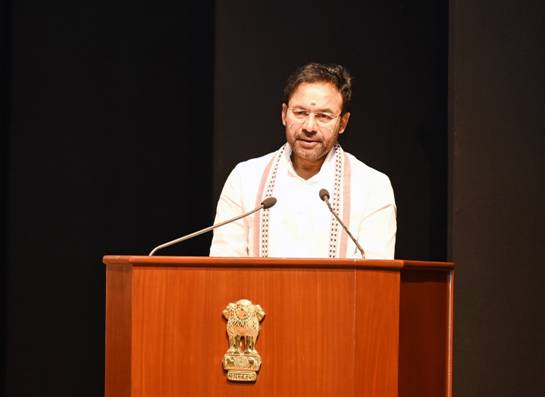
Shri G. Kishan Reddy, Minister of Coal & Mines, in his speech, congratulated all the awardees and underscored the important role of geoscientists in making India a global powerhouse. In line with the vision of ‘’Viksit Bharat 2047’, he reiterated the government’s commitment to enhancing the mining sector through various reforms, including the amendments to the Mines and Minerals (Development and Regulation) Act. The amendments in the MMDR Act in 2023 have empowered Central Government to auction 24 critical and strategic minerals. As on today, Ministry of Mines has auctioned 14 such blocks so far. He further added, to expedite exploration in the country, Ministry of Mines has recently introduced the exploration license for 29 deep-seated minerals. He highlighted the recent announcement in the 2024 Budget for setting up the Critical Mineral Mission which is a significant step towards securing the supply chain of these essential minerals. He also emphasized on the adoption of emerging technologies like AI/ML in mineral discovery and exploration.
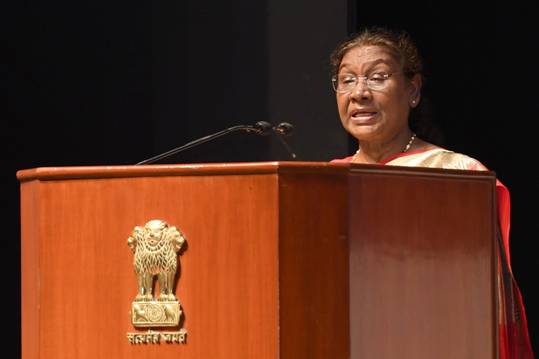
The President of India, in her address, said that to achieve India’s goal of becoming a developed nation by 2047, it is important to achieve self-sufficiency in mineral production. She was happy to note that the government is taking many steps like integration of geoscientific data through National Geoscience Data Repository Portal, use of AI and emerging technologies in exploration and mining of mineral resources. She expressed confidence that these steps will enable us to understand our natural wealth better and utilize it properly. The President said that moving towards sustainable development, India is committed to achieving Net Zero Carbon Emission. She expressed confidence that the establishment of National Critical Minerals Mission will help India become self-reliant and strengthen value chain of critical minerals required for economic development and green transition. The President also underscored the importance of the establishment of National Landslide Forecasting Centre in Kolkata which will issue an early warning bulletin for all landslide-prone states. The President urged the youth to understand the importance of geo-tourism and geo-heritage sites. She stated that geo-tourism can be medium to encourage people to join the field of geoscience.
The National Geoscience Awards continue to symbolize recognition and appreciation for outstanding achievements in geosciences, mineral exploration, and natural hazard investigations driving forward the pursuit of excellence and sustainable development.
Annexure 1: Citation Book
****
ST



